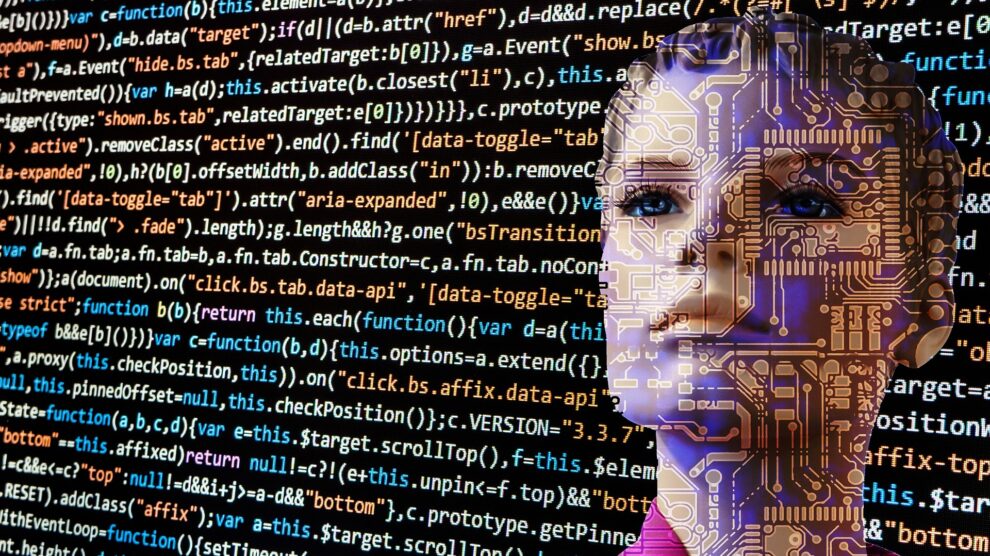For years, C-suite technology strategists have aimed for their companies to go digital to remain agile, stay competitive, and support business objectives. Now, organizations across industries – from healthcare and finance to retail and others – seem ready to act on this with new AI-powered tools that fuel work efficiency, business growth, and team productivity. According to McKinsey, 63% out of 100 organizations with annual revenues of over $50 million mark the implementation of AI as a “high” or “very high” priority.
However, today’s application developers are still far from being replaced by Artificial Intelligence (AI) technologies. For instance, in a report, Evans Data Corporation indicated that “26% percent of developers working specifically in the AI and machine learning field state that AI is already putting developers out of work. Another 40% of these developers believe AI will begin putting them out of jobs within a year.” Despite this concern that AI will eliminate traditional development entirely, companies still need human input and the know-how of their software engineers to revamp processes.
Manual efforts, such as writing basic functions, will shift with the emergence of new digital work trends where developers’ skills evolve to accommodate the need for shorter development cycles, better synergizing AI and automation tools.
But let’s see how exactly AI is shaping the future of the software development lifecycle.
AI + Low-Code Symbiosis
First, there’s the AI + low-code symbiosis. These two terms are slowly becoming more and more intertwined. It is no surprise because low-code platforms, like App Builder, in addition to AI technologies, redefine how people build modern-day applications. With the goal of streamlining anything from design to code, low-code tools, similar to AI, introduce unique opportunities for organizations and their teams.
Leveraging low-code capabilities and AI speeds development by reducing manual CSS or UI design work. According to Gartner, “Forty percent of generative AI (GenAI) solutions will be multimodal (text, image, audio, and video) by 2027, up from 1% in 2023.” In that sense, by working together, low-code and AI can automate repetitive, mundane tasks like creating and reusing buttons or crafting visuals faster without the need for designers.
Changing Roles of Software Developers
Second, with AI’s impact on software development, we can see the roles of software developers changing, encouraging a blend of technical and non-technical abilities. Developers will have to start communicating more proactively with stakeholders and C-level executives to align development and business goals, convert requirements into modular parts, and determine the best ways to use automation.
Another role transition is that programmers now oversee AI/low-code projects. This is because AI-generated applications must undergo routine testing to ensure stability and security, as AI uses plain language prompts instead of complex coding. Additionally, as companies focus more on adopting AI technologies to accelerate delivery, developers who understand how to optimize and extend these platforms remain vital. Their expertise now involves inspecting the AI-generated code, guiding best practices, managing AI-driven workflows, and more.
Empowering More People to Develop Applications
AI can also encourage innovation at different levels and even democratize app development, empowering more people to develop applications. According to the Reveal 2025 Top Software Development Challenges survey, 73% of the tech leaders surveyed said their main priority is AI adoption.With a more flexible mindset and strategies, companies rely on citizen developers who can easily take part in different projects, thanks to automation and the reduced need for manual hand-coding.
AI-assisted development tools let stakeholders or junior developers create visually appealing apps, using AI to suggest layouts, generate images, define color schemes, write prompts in plain language, and more. Users can describe what they need, and AI will design and generate it.
Faster Time to Market
The next step is ensuring faster time to market because speed is essential in app development. AI can provide a competitive edge and the ability to launch better solutions in shorter sprints. By using AI for code completion, automated testing, code error detection, code generation, AI view generation, or AI-driven deployment, teams are empowered to build apps faster.
There are tools that allow developers to generate production-ready code instantly. Sometimes, with more advanced technologies, the code is taken to another level, enabling it to work with any framework. This means programmers don’t have to decide on the framework before building the app. They can leverage reusable and customizable UI components to craft the app. Then, they can generate and switch the code from one technology to another – Angular, React, Web Components, Blazor, or any other – with the click of a button.
Other platforms, like Slingshot, even introduce AI insights based on users’ data to boost operational efficiency.
Cost-Reducing & Resource-Optimizing Factors
There are also cost-reducing and resource-optimization factors in AI. Refactoring, iterations, and feature updates are all time-consuming and cost-intensive, especially when they involve manual coding written line by line. However, AI-driven tools minimize these manual efforts, automate tasks, improve resource allocation, and eliminate technical debt. Enterprise architects no longer need to handle small tasks. They can prioritize high-value tasks, whereas citizen developers and junior programmers can easily build simple screens and test functionalities to detect bugs with the help of AI-driven tools.
AI Risks
It is easy to see how one technology can boost innovation, increase productivity, and propel growth. However, it may also create challenges, especially if companies haven’t fully evaluated the risks. How can you be sure that AI is delivering real and measurable outcomes? Here’s what to consider to avoid the potential risks associated with AI:
- Functionalities and scalability – Some tools have proprietary features, which is why it’s key to consider the vendor lock-in aspect.
- Security vulnerabilities – Companies should always validate the output to ensure everything meets security standards.
- Data privacy – Establishing encryption and anonymization to protect sensitive data is key.
- Ownership and ethical considerations – Users must stay informed about potential legal challenges and maintain transparency around AI.
The Final Verdict
AI has not yet replaced developers because it still relies on human skills and expertise. While AI can assist in automating tasks and enhancing productivity, it lacks the creative problem-solving, critical thinking, and domain-specific knowledge that developers bring to the table. Developers can understand complex business needs, make judgment calls on design choices, and handle ambiguous situations that AI cannot fully address. AI can complement their work but can’t yet replicate the full range of human intelligence and experience that is essential for building sophisticated, tailored software solutions.





